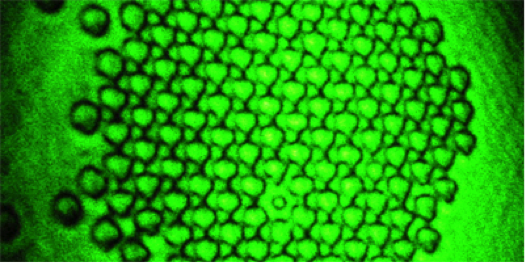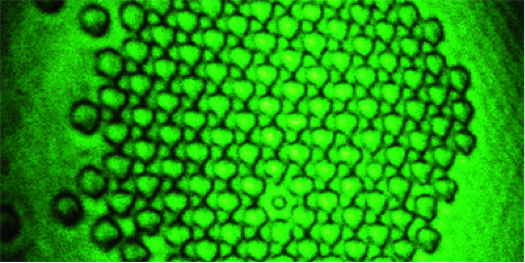Herding Particles to Make a Mirror
Several technologies, such as optical tweezers for holding and manipulating microbes and other single particles, are based on creating forces with optical fields. Researchers also want to grab and arrange multiple particles to form useful structures. Now, Tomasz Grzegorczyk from BAE Systems in Burlington, Massachusetts, and colleagues have successfully created a reflecting surface from hundreds of microparticles locked into position at the focus of an intense laser beam. Small optical elements may be a near-term application, but the researchers also speculate that the result, published in Physical Review Letters, could be one step on the way to ultralight telescope mirrors in space.
The researchers made their multiparticle mirror out of -micrometer-diameter polystyrene microspheres suspended in water. A laser emitting continuous -nanometer-wavelength light provided the optical trapping field. The laser was focused to a -micrometer spot that caused the spheres to gather in a thin, closely packed layer on the glass surface of a sample cell. Using a set of lenses, Grzegorczyk et al. reflected an image created with a -nanometer laser off of the microparticle array and collected it with a camera. Their results show the mirror can transmit the image with good fidelity.
The authors also carried out numerical simulations of mirrors made from microspheres in various arrangements (parabolic surface, etc.) and conclude that laser-trapped mirrors could, in principle, attain the imaging quality of existing optical systems. – David Voss





